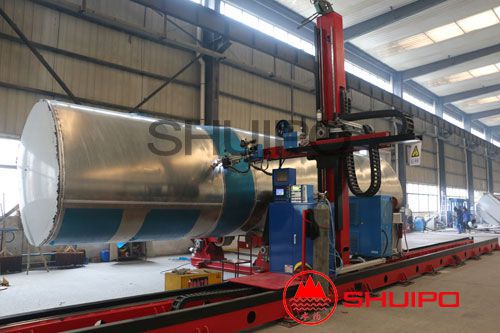Comprehensive Tank Welding Assessment for Industrial Safety and Regulatory Compliance
Making sure commercial safety and regulative compliance within the realm of container welding inspections is an important aspect of preserving operational honesty and mitigating possible risks. The careful exam of weld quality, material thickness, and total container condition is critical in safeguarding against environmental risks and structural failures. By delving into the complexities of detailed container welding inspections, a deeper understanding emerges of the multifaceted methods utilized to promote industry standards and support safety procedures.
Significance of Storage Tank Welding Assessments
Carrying out detailed and regular tank welding inspections is important in guaranteeing the structural integrity, safety criteria, and governing conformity of commercial storage tanks. These evaluations play an important function in identifying any possible flaws or weaknesses in the welded joints that can endanger the total stability of the tank. By spotting these issues beforehand, firms can take positive actions to resolve them promptly, therefore protecting against expensive repair work, ecological contamination, or, in the worst-case situation, devastating failings.
Routine storage tank welding assessments likewise aid companies comply with industry laws and requirements stated by authorities such as the American Petroleum Institute (API) or Occupational Security and Wellness Management (OSHA) Failure to fulfill these demands can cause penalties, legal consequences, or even the suspension of procedures. Tank Welding Inspection Service. For that reason, purchasing detailed tank welding assessments not only safeguards the health of workers and the surrounding environment yet additionally secures the company's track record and bottom line in the future
Trick Parts of Weld Top Quality Evaluation
Guaranteeing the quality of welds involves a thorough examination of crucial components that add to the architectural honesty and integrity of industrial tanks. One critical element of weld quality analysis is the assessment of weld infiltration. By thoroughly evaluating these essential components, assessors can help assure that welded joints meet the essential requirements for safety and security and regulative compliance in industrial container building.
Material Density Evaluation Strategies
In the context of weld high quality analysis, an important aspect to think about is the use of material thickness analysis methods. Exact measurement of product density is important in making certain the structural honesty and safety of welded containers. Various non-destructive testing (NDT) approaches are employed for evaluating product thickness, consisting of ultrasonic screening, radiographic screening, and magnetic particle assessment. Ultrasonic screening involves the use of high-frequency audio waves to determine material thickness by determining the time considered the acoustic waves to travel with the product and mirror back. Radiographic testing uses X-rays or gamma rays to create photos showing worldly density. Magnetic particle evaluation works for detecting surface and near-surface problems that may impact product density. These methods not just aid in reviewing the density of products but also aid in identifying any prospective defects or gaps that might jeopardize the weld high quality and total honesty of the container framework. By utilizing these product thickness examination methods, sectors can make sure compliance with security requirements and guidelines, consequently boosting general operational safety and dependability.
Tank Problem Assessment Methods
A vital aspect in keeping the integrity and safety and security of welded tanks is the complete evaluation of container conditions via dependable assessment methods. Container condition assessment methods play a vital role in making sure the structural strength and functional efficiency of commercial tanks. Visual assessment is a main approach utilized to analyze the external condition of containers, looking for indications of corrosion, leaks, or physical damages. In addition, non-destructive testing methods such as ultrasonic screening and radiographic screening are employed to discover inner problems, weld defects, and material deterioration that might endanger the tank's performance. Tank Welding Inspection Service. Moreover, magnetic fragment assessment can recognize surface area cracks and defects that are not visible to the visit our website naked eye. These assessment approaches give valuable insights into the general health and wellness of the tank, allowing very early discovery of prospective concerns and promoting prompt upkeep or repairs to ensure compliance with safety guidelines and sector criteria. Normal examinations making use of these approaches are crucial for protecting against catastrophic failings and making certain the lasting dependability of welded storage tanks.
Advantages of Regular Assessment Practices
Regular assessment techniques not just secure versus potential problems spotted throughout container condition assessment methods however likewise act as positive measures in supporting the architectural honesty and operational effectiveness of bonded containers. By conducting routine examinations, industrial facilities can recognize any indications of rust, splits, leaks, or other problems in the storage tank welds promptly. This very early detection allows timely repair services or upkeep treatments, preventing little problems from rising right into bigger, extra costly issues that might endanger safety and security or bring about regulatory non-compliance.

Final Thought

In verdict, extensive container welding evaluations are crucial for guaranteeing commercial safety and security and regulatory compliance. By performing normal evaluations and assessments of weld quality, product find more density, and tank condition, organizations can determine possible risks and avoid expensive crashes. Applying a proactive method to inspection methods can help keep the structural honesty of tanks, safeguard the atmosphere, and make sure the safety and security of employees and the bordering area.
